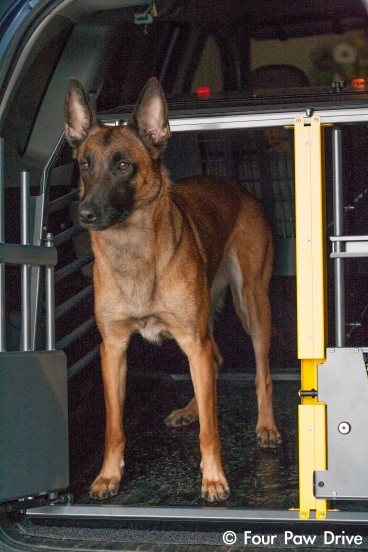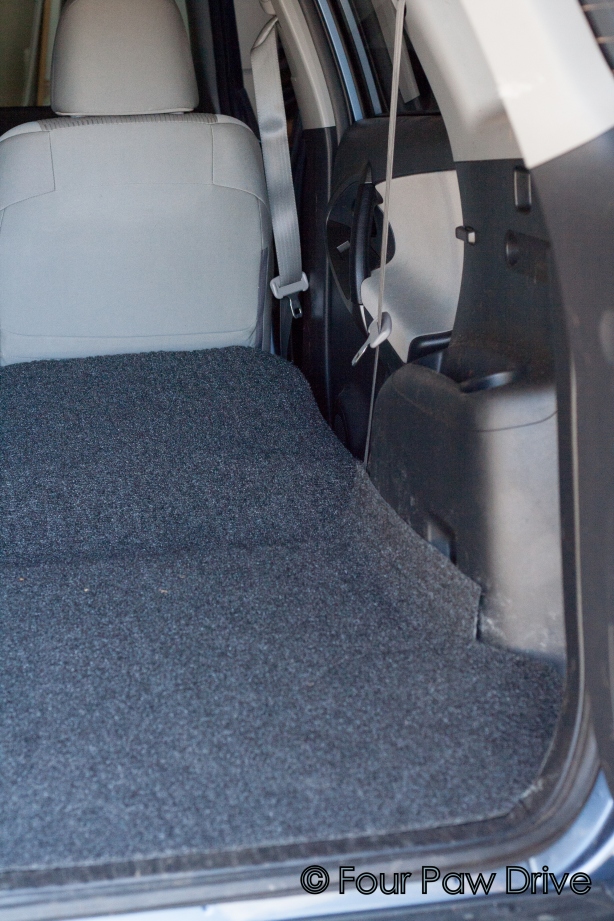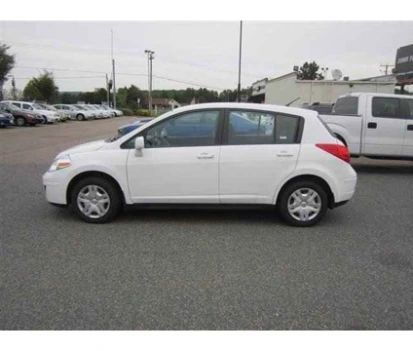I recently acquired the newest model of the Variocage, one of the very few, if not the only, crash tested dog transportation options available. Until just about a year or so ago, Variocages had to be imported from Europe, but now they are available through several online retailers in the US: 4×4 North America, Clean Run, and Mighty Mite Dog Gear.
The Variocage has been crash tested in Europe at 50km/h with a 45kg canine “dummy”. It is designed to absorb forces in a rear-end accident through the use of telescoping panels and bars that form the Variocage’s own “crumple zone” while still maintaining structural integrity. Crash test video can be seen here: http://www.youtube.com/watch?feature=player_embedded&v=9uPeMliuxbY
I purchased my Variocage from 4×4 North America (4x4northamerica.com). And, just for my readers and facebook fans, you can receive a 10% discount by using the code Menapode (including the capital M) at checkout on the 4×4 North America site.
Now, onto the details!

The photo above is of the Double XX Large Variocage in my 2011 RAV4. This is the largest size they make and the dimensions as it is currently assembled are: 41.73″ wide, 37″ deep, and 28.14″ tall. The width and height are fixed, but the depth is adjustable from 31.89″ to 40.55″. This size weighs approximately 85lbs.
With the current length and the slope of the back side of the Variocage, I can still use my back seats comfortably, unlike with the 36″ SUV crates I was using previously that required the seat backs to be set at an uncomfortable position. I have about an inch of clearance on each side of the Variocage currently, so there is some shifting after moving the vehicle, but that could be easily remedied with the tie down straps included with the Variocage.
I’m not 100% sure that I could slide the Variocage out of my vehicle fully assembled, but I was able to do so when it was half-assembled during the initial install. The primary issue for my vehicle is the hatch itself, NOT the hatch opening. The Variocage is also quite heavy, so I installed it knowing that I would not be taking it in and out of my vehicle frequently.
I have also installed the provided divider for my Variocage as I need to transport multiple dogs. This divider is solid and installed with several screws – it does not just slide in and out as some dog box dividers I’ve seen in the past. There is a small lip on the bottom of the divider that would not be comfortable for a dog to step on, but a bathmat in the Variocage makes that a non-issue. With the divider installed, each side is approximately 19″ wide, with the depth dependent on the overall Variocage’s adjustment.
I received the Variocage partially unassembled. Assembly was mostly a matter of putting larger pieces together – you don’t just get a box full of bars and metal, but rather full sides and doors that need to be mounted to a frame. I decided to assemble the Variocage in my vehicle since I was unsure whether it would fit past the hatch fully assembled. The manufacturer warns against this, but my 5’1″ self was able to do it alone and with a minimum of annoyance in about 2 hours, including the complete removal of the half assembled Variocage *twice* when I thought I had it in backward, corrected it, and then realized that it had been sitting correctly the first time!
The most frustrating part of the whole assembly process was keeping everything aligned while I screwed things together – a second person would have been VERY helpful at that point. All parts and tools were provided with the Variocage itself. The instructions are visual, which was a bit confusing at times, but the assembly video on the 4×4 North America website proved useful for clarification.
The Variocage did also come with a rubber mat cut to fit the bottom that I chose not to use since one of my dogs is a crate digger and I wanted her half of the Variocage empty. We use bathmats on one side and a towel on her half now.
After using the Variocage for about 2 months, I can say that I’m VERY happy with the design, durability, and overall ease of use in addition to knowing that my dogs are in the safest crate option available.
Design
The crate has a slight slant to the front and a more extensive one in the back to accommodate seat backs. This makes fitting it in a vehicle much more pleasant that square crates.
The Variocage is NOT designed to be free floating in a vehicle – having it resting behind a seat is integral to the safety features, and the crate will not deform the back of a seat it rests against at tested speeds.
The slant does make the Variocage look much smaller than it actually is – my 40lb dogs both fit with plenty of room to spare and I can comfortably crate my two smaller dogs (33lbs and 24lbs) together in one side.

The bar spacing on the front and sides depends on the size of Variocage purchased. On mine, the spacing is wide, but none of my dogs are at risk of getting a head stuck as the spacing is not that wide.
The back panel is a grid instead of bars now and includes an “escape hatch” in case the rear door is unusable after an accident. This escape hatch is not designed for regular use as a door – it is a bit unwieldy to open and a whole panel is removed to function as the “door”.
The bottom tray is two pieces of metal that slide to adjust for the desired depth of the Variocage. They sit flush to each other and I have no worries about toes or fur being caught while in use. The edges of the tray slope up, containing hair, spilled water from bowls, sand, etc. nicely.
During use, the Variocage does occasionally have some rattle, but less than the SUV crates did, and certainly much less than the airline or wire crates I’ve set on my back seat before.
Durability
The Variocage is made up of metal panels and bars with metal screws. The only plastic is on the end caps for the bars and the knobs for the escape hatch and adjustment points. This is a substantial crate and I know I will have it for many, many years to come.
My malinois is a crate digger. She digs each time she’s put into the vehicle, so the tray has taken a lot of abuse from her – there are visible discolorations in the finish, but the surface of the tray is still smooth. In fact, because there is so little give in the metal tray, her digging has lessened because it’s not nearly as much fun as in a crate with a plastic tray!

I’ve not had to adjust any parts of the Variocage since installation – everything has stayed just where I left it, despite many miles on the road and many hours containing dogs!
Ease of Use
Nothing is difficult about using the Variocage. The doors have latches that can’t be reached by dogs, the doors have hydraulic bars to hold them open and make closing super simple (I have closed them with an elbow several times!), and the lip on the bottom is low, so my dogs have never had an issue getting in or out, even at high speeds!
The Variocage even has individually locking doors, so that I can secure my dogs yet still leave my hatch open for ventilation and the side bars hold my crate water buckets perfectly!
Each door has a small space for paperwork that works marvelously for my In Case of Emergency packets, too!
I would highly recommend the Variocage for anyone looking for a safe way to carry dogs in the back of a vehicle. It is not designed to be used sideways or front facing, or against other crates, which does limit its use for some, but many dog people crate their dogs in cargo areas that may or may not be crumple zones, and it is certainly well designed for that application.
The initial price IS steep, but consider that this may be the last crate you need to buy for your vehicle and the price per mile or even per year, is much more palatable, especially given the safety you will be providing your animals while traveling.
Any questions? Need more photos? Leave me a note in the comments!


 The divider had bent a LOT more than it would have if it had been properly secured – it was only secured by two instead of the full complement of bolts because of a recent adjustment – but it still was not dangerous. At the tow yard later, I was able to pull items in the Variocage out via the ‘escape hatch’ with no issues whatsoever.
The divider had bent a LOT more than it would have if it had been properly secured – it was only secured by two instead of the full complement of bolts because of a recent adjustment – but it still was not dangerous. At the tow yard later, I was able to pull items in the Variocage out via the ‘escape hatch’ with no issues whatsoever.









